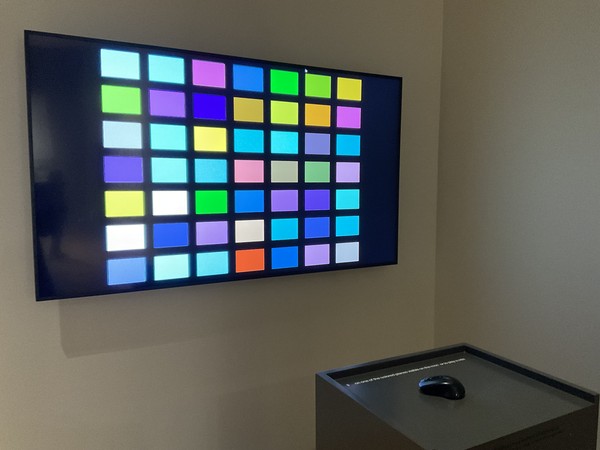
As time goes by, the present becomes the past, and the future becomes the present. This passage of time is linear, but the era reflected in a work of art transcends time and space, influences others, and has circularity. Through works existing in a certain period, we can understand the characteristics that penetrate the times and think about another ongoing and upcoming era. This SMT reporter visited the exhibition "Back to the Future: An Exploration of Contemporaneity in Korean Contemporary Art," which contains pieces acquired over a 5-year period, from 2018 to 2022.

Capturing the turbulence of society
The 1990s was a turbulent era in which countries fluctuated between boom and bust, with Korea joining the World Trade Organization and the Organization for Economic Cooperation and Development before the 1997 Korean currency crisis. In addition, it was a time when the Internet developed with commercialization and the information revolution came, bringing the coexistence of the analog and digital world. These works of art from the 1990s to the 2000s capture the essence of society at the time. The National Museum of Modern and Contemporary Art (MMCA), Seoul is holding a special exhibition of its collection after noticing that the works collected from 2018 to 2022 reveal a contemporary pattern. The American sci-fi movie <Back to the Future> influenced the title of the exhibition in that the main character of the film travels back 30 years through a time machine.
The National Museum of Modern and Contemporary Art, Seoul, is located at 30 Samcheong-ro, Jongno-gu, Seoul. To get to the exhibition from Sookmyung Women's University, take subway Line 4 from Sookmyung Women's University Station and transfer to subway Line 3 at Chungmuro Station. Then, take the subway heading toward Euljiro 3-ga and get off at Anguk station. From exit 1, walk about 900m and you'll reach the MMCA. The cost of the exhibition is free, and advance reservation is not required. You can get an audio guide with explanations and a PDF brochure which contains brief exhibition information in the 'Current Exhibition' section on the official website.

Coexistence with the not-too-distant past
The exhibition has a total of 33 pieces divided into four sections. The section with the title of "A New Era of Diversion, and Paradigm Shift in Art," displays the artworks revealing contemporaneity in Korean contemporary art. Vaporized Things (Post IMF) by Lee Yong-baek is a video of a man in a suit and walking underwater with a respirator. It represents the unstable state of the late 1990s, and the man who tries to breathe and resist the water on the screen indicates the people who resisted the rapidly changing times. Another section, "Energizing Nonconformity," deals with things like non-linearity, segmentation, refraction and skewness through the media-based artworks. Among them, Black Scud by Ryu Bi-ho shows 11 people who are constantly running. Their movements represent the anxiety about a society in which control, monitoring, and personal information disclosure are enforced through the internet and artificial intelligence. All the runners are running to different beats and their all-black clothes also remind viewers of its title.
Further to this complexity of that time, the section with the theme of "Heterogeneity and Its Critical Time and Space" introduces pieces that depict mixed situations with no clear boundaries of times. Rho Jae-oon set up the website god4saken.net in 2009 which is exhibited here with the title of God4Saken. Visitors can select the color on a monitor with a click of the mouse and watch videos which are based on the noir genre. At the end, ""Interfering with" or "Intervening in" the Future," the last section, explains that our autochthonic time and space is experiencing the universal values that past artists pursued. Hand in Hand with Amigos para Siempre, a video work of An Jung-ju, uses 16 analog TV screens and shows a visual fracturing through the difference in the speed of the Olympics' opening event and competitions. This set-up reveals the contradictions and conflicts that lie beneath the surface of the international event. Therefore, people can perceive the past buried in the works through the overall flow of the exhibition.


Ratings: ★★★★☆
This exhibition aims to introduce Korean contemporary artworks influenced by the 1990s. As it is composed of not only paintings but also videos and installation art, the whole exhibition makes visitors appreciate contemporary art through a variety of media and from various perspectives. However, without an explanation, it may not be easy to enjoy the exhibition since there are many pieces whose content or creative meaning are difficult to understand well. This SMT reporter recommends this to those who want to feel the nostalgia of the past through many figurative works.


